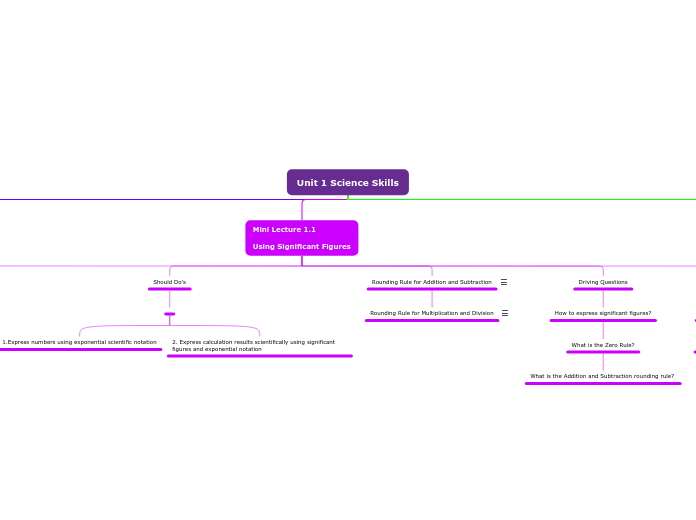jonka Rhaitaysha Bruhn 2 vuotta sitten
300
1 Science Skills

jonka Rhaitaysha Bruhn 2 vuotta sitten
300

Lisää tämän kaltaisia
Accuracy- How close a measurement is to the known value
Precision- How close a measurement is to one another
Metric System:
Kilo- 1000 units (k)
Hecto- 100 units (h)
Deka- 10 units (da)
(To convert to a larger unit, move decimal point to the left or divide)
Basic Unit
Deci- 0.1 units (d)
Centi- 0.01 units (c)
Milli- 0.001 units (m)
(To convert to a smaller unit, move decimal point to the right or mulitiply)
3) What are the Conversion Rules
Conversion from one unit to another:
1) Write the GIVEN value and Unit in the top of the first box
2) Write the GIVEN value unit in the bottom of the second box and the unit you are finding in the top of the second box
3) *Compare the units then give the LARGEST unit a value of 1
4) Cancel like units and complete the math.
1000cm/0 1m/100cm= 10.00 M
64in/0 2.54cm/1in= 162.56cm
4) What is Density
Density (g/mL) : Mass (g) / Volume (mL) (per unit volume)
2) What are the metric units?
Calculations (Multiplication Rule)
1) 0.064 x 4.31 = 0.27580
2) 0.28
3) 2.8 e -1
Calculations (Scientific Notation)
1) 5.7259 e 11 / 1.265 e 7 = 4.5264 (11-7=4) e 4
(Remember to subtract exponents of division, add exponents of multiplication)
2) 4.526
3) 4.526 e 4
3) Scientific Notation
What is the Zero Rule?
What is the Addition and Subtraction rounding rule?
(Fewest # of digits after the decimal point)
Example: 28.0cm + 23.538cm + 25.86cm = 77.218cm
1) 5.74 + 0.823 + 2.651 = 9.214 = 9.21 (Addition)
2) 4.8 - 3.965 = 0.835 = 0.8 (Subtraction)
(The answer must have the same number of significant figures as the measurement with the fewest numbers of significant figures.)
Example:
24x3.28= 78.72 =79
2. Express calculation results scientifically using significant figures and exponential notation
1.Express numbers using exponential scientific notation
Multiplication Rule
Addition Rule
The "Zero Rule"
line
Pie Graph
Scatterplot
Contain an independent and dependent variable
Claim, Justify, Evidence
Be measurable
be clear and understandable
Be testible
Explain what you expect to happen
If i change__ will it affect __?
Does changing__ affect __?
How does changing ___ affect___?
What are the different experimental variables?
Constant
Variable that stays the same/constistent
Control
Normal Conditions
Independent Variable
The one thing you change (The actual measurement)
Cause
Always on the x axis
Dependent Variable
Variable that changes because of independent variables. (results)
Effect
Y axis
Variable = anything that is changed in an experiment
Subtopic